Unesco - Blog Posts







Sean bienvenidos japonítasarqueológicos a una nueva entrega síntesis de cultura japonesa en esta ocasión os presento la festividad de Setsubun (節分) - Introducción: En los animes seguramente habéis visto las escenas, en las que se comen un maki, además arrojar frijoles a los demonios, consiste en un exorcismo. - Está festividad surgió en el periodo Heian (794-1192) - ¿La conocían? Espero que os guste y nos vemos en próximas publicaciones de Japón. - Welcome Japanese archaeologists to a new Japanese culture synthesis, this time I present to you the Setsubun (節分) festival. - Introduction: In the animes you have probably seen the scenes, where they eat a maki, plus throwing beans at demons, it consists of an exorcism. - This holiday originated in the Heian period (794-1192). - Did you know it? I hope you like it and see you in future posts from Japan. - 日本の考古学者を歓迎し、新しい日本文化の合成を紹介します。今回は節分祭を紹介します。 - はじめにアニメで見たことがあると思いますが、巻き寿司を食べながら、鬼に豆を投げてお祓いをするシーンがありますよね。 - 平安時代(794-1192)に始まったとされる祝日。 - 知っていましたか?気に入っていただけたら、今後の日本からの投稿でお会いしましょう。

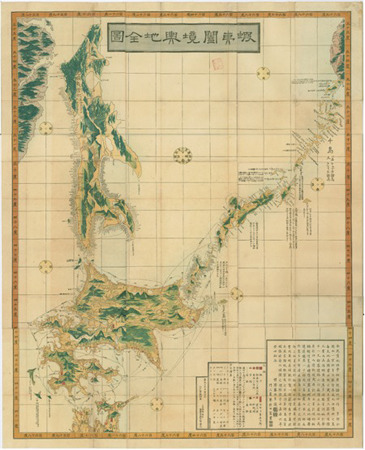


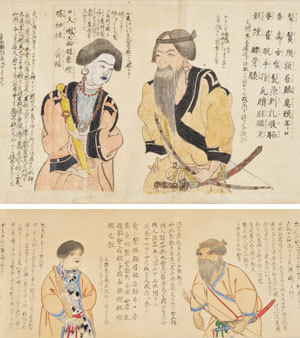
Capítulo 1: Introducción a los Emishi. Sean bienvenidos amantes del mundo japonés a una nueva publicación, en esta ocasión vamos a hablar sobre los emishi dicho esto pónganse cómodos que empezamos. - Para empezar, el término emishi hace referencia a todas las tribus y pueblos que vivían y que todavía viven al norte de Japón es decir la mitad norte de Tohoku, incluida hokkaido a este pueblo se le denominaba y se le denomina todavía a día de hoy Ainu, considerados los primeros pobladores del archipiélago a lo largo del siglo XVI hubo una serie de campañas militares para controlar dicho territorio aunque ya en el siglo VII siglo VIII después de Cristo durante el apogeo del clan yamato crearon una serie de fortalezas al norte para mantenerlos a raya. De hecho eran denominados bárbaros del norte que además se revelarán en más de una ocasión bajo el dominio japonés sin resultado alguno, actualmente se les da un reconocimiento a esta cultura, que en el pasado no lo tuvieron, como por ejemplo hay un museo dedicado a ellos y a su cultura. - Espero que os haya gustado y nos vemos en próximas publicaciones que pasen una buena semana. - 第 1 章: 蝦夷の紹介。 日本世界を愛する皆さん、新しい出版物にようこそ。今回は蝦夷について話します。とはいえ、気を楽にして始めましょう。 - まず、蝦夷という用語は、日本の北、つまり北海道を含む東北の北半分に住んでいた、そして今も住んでいるすべての部族と民族を指し、この民族は現在もアイヌと呼ばれていると考えられています。 16 世紀を通じてこの列島に最初に定住した人々は、その領土を支配するために一連の軍事作戦を行ったが、すでに 7 世紀から 8 世紀にはヤマト氏の全盛期に、彼らは北に一連の要塞を築き、領土を維持していた。湾。実際、彼らは北の野蛮人と呼ばれていましたが、日本の統治下でも何の成果も得られずに何度も姿を現しましたが、現在では、この文化は、例えば、そこでは過去にはなかった認識を与えられています。は彼らとその文化に特化した博物館です。 - 気に入っていただければ幸いです。今後の投稿でお会いしましょう。良い一週間をお過ごしください。 - Chapter 1: Introduction to the Emishi. Welcome lovers of the Japanese world to a new publication, this time we are going to talk about the emishi, that being said, make yourself comfortable and let's get started. - To begin with, the term Emishi refers to all the tribes and peoples who lived and still live in the north of Japan, that is, the northern half of Tohoku, including Hokkaido. This people was called and is still called Ainu today. , considered the first settlers of the archipelago throughout the 16th century there were a series of military campaigns to control said territory although already in the 7th century 8th century AD during the heyday of the Yamato clan they created a series of fortresses to the north to keep them at bay. stripe. In fact, they were called barbarians of the north who also revealed themselves on more than one occasion under Japanese rule without any result. Currently, this culture is given recognition, which in the past they did not have, such as, for example, there is a museum dedicated to them and their culture. - I hope you liked it and see you in future posts, have a good week.

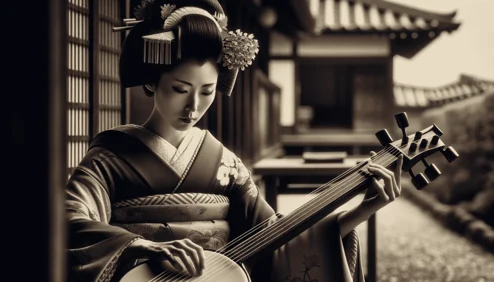





Hace unos meses, ha tenido lugar en el país del sol naciente en uno de los distritos más populares de Kyoto, por el que transcurren las geishas a pesar de los avisos que se han hecho respecto al tema, como: El no hacer fotos o vídeos, la gente ha pesado de los avisos que se han hecho. - Parece ser que hay personas que se lo han pasado por donde les ha dado la gana hay gente que ha llegado a tirarle de la ropa, además de perseguirlas cuando se iban a meter en el taxi y un largo etcétera a día de hoy desde este pasado mes de abril, pues, no se puede entrar a no ser que entres y pagues una multa lo cual me parece bien y también me parece bien como sistema para controlar el exceso de turismo. - ¿Qué opinan ustedes? Os leo en comentarios. - A few months ago, it took place in the land of the rising sun in one of the most popular districts of Kyoto, where geishas hang out despite the warnings that have been made regarding the subject, such as: Do not take photos or videos , people have weighed the warnings that have been made. - It seems that there are people who have had it wherever they wanted, there are people who have even pulled at their clothes, in addition to chasing them when they were about to get into the taxi and a long etcetera to this day from this past month of April, well, you cannot enter unless you enter and pay a fine, which seems fine to me and also seems fine to me as a system to control excess tourism. - What do you think? I read you in comments. - 数カ月前、日出ずる国の京都で、芸者衆が通る人気の繁華街で、こんなことがあった: 写真やビデオを撮らないよう、人々は警告を重く見た。 - 昨年4月の今日から、入場して罰金を払わない限り入場できないようになったが、これはこれでいいような気もするし、過剰な観光を抑制するシステムとしてもいいような気もする。 - どう思いますか?どう思いますか?
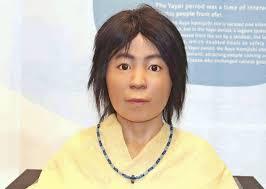




Sean bienvenidos amantes del mundo japonés a una nueva publicación, en este caso voy a dar mi opinión sobre uno de los hallazgos que se han hecho en el país del sol naciente y que tiene que ver con el rostro del niño reconstruido y de cómo la genética se aplica a la arqueología espero que os guste.
-
Antes que nada, el periodo yayoi abarca las siguientes fechas, 300a. C 300 d.C estas fechas son las tradicionales, aunque hay estudios más recientes del siglo IX antes de Cristo desde la península de Kyūshū, pero bueno, eso serán otras publicaciones que realizaré sobre el tema, pero en este caso nos vamos a centrar en este hallazgo este hombre se llama Aoya kamijiro.
-
Fue creado en octubre de 2021, ya que 1998 se encontraron unos restos arqueológicos de más de cien huesos humanos por lo cual es una tarea complicada, pero que nos permite reconstruir las facciones y no solo de la gente prehistórica, sino también de la propia historia como del mundo antiguo y de muchas épocas históricas.
-
Esto se obtiene a raíz de los huesos de los que se pueden extraer pequeñas muestras que son las que nos permitirán, saber si el individuo en cuestión era masculino era femenino y si padecía patologías.
-
Las nuevas tecnologías nos permitirán reconstruir fiel miente de alguna forma u otra el rostro, a la cual parece, ya que esto es un avance muy notable, tanto en la genética como en la arqueología porque podemos reconstruir bastante bien a la gente del pasado no sobre toda la población, que suele estar olvida en un segundo plano.
-
Espero que os haya gustado que pasen una buena semana.
-
日本を愛する皆さん、新しい出版物へようこそ。今回は、日出ずる国で行われた、復元された子供の顔と遺伝学に関係する発見の 1 つについて、私の意見を述べたいと思います。考古学にも応用できると思います。
-
まず、弥生時代は以下の300aの年代になります。 西暦 300 年頃 これらの日付は伝統的なものですが、九州半島からは紀元前 9 世紀に関するより最近の研究もありますが、それはまた別の出版物でこのテーマについて行う予定ですが、この場合は次のようにします。この発見に焦点を当ててください この男の名前は青谷神代です。
-
1998年に100体以上の人骨の考古学的遺跡が発見されて以来、この計画は2021年10月に作成された。そのため複雑な作業ではあるが、先史時代の人々の派閥だけでなく、古代世界や歴史上のさまざまな時代からの歴史そのものです。
-
これは骨から得られるもので、少量のサンプルを抽出することで、問題の人物が男性か女性か、また病状を患っていたかどうかを知ることができます。
-
新しいテクノロジーにより、何らかの方法で、その顔に見える顔を忠実に復元できるようになります。これは、遺伝学と考古学の両方において非常に注目に値する進歩です。なぜなら、私たちは過去の人々についてではなく、非常によく復元できるからです。国民全体が、通常は背景に隠れて忘れ去られています。
-
気に入っていただければ幸いです。良い一週間をお過ごしください。
-
Welcome lovers of the Japanese world to a new publication, in this case I am going to give my opinion on one of the discoveries that have been made in the country of the rising sun and that has to do with the reconstructed child's face and how genetics It applies to archeology. I hope you like it.
-
First of all, the yayoi period covers the following dates, 300a. C 300 AD These dates are the traditional ones, although there are more recent studies from the 9th century BC from the Kyūshū peninsula, but well, that will be other publications that I will make on the subject, but in this case we are going to focus on this discovery This man's name is Aoya kamijiro.
-
It was created in October 2021, since archaeological remains of more than one hundred human bones were found in 1998, which is why it is a complicated task, but it allows us to reconstruct the factions and not only of the prehistoric people, but also of history itself. as from the ancient world and from many historical periods.
-
This is obtained from the bones from which small samples can be extracted that will allow us to know if the individual in question was male or female and if he suffered from pathologies.
-
New technologies will allow us to faithfully reconstruct the face, in some way or another, to which it appears, since this is a very notable advance, both in genetics and in archeology because we can reconstruct quite well the people of the past not about the entire population, which is usually forgotten in the background.
-
I hope you liked it and have a good week.
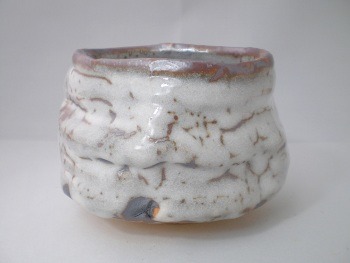
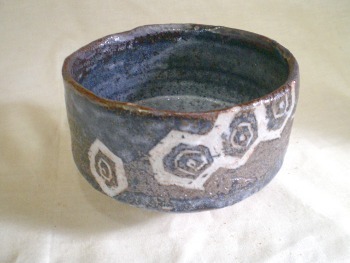



Sean bienvenidos, japonsistasarqueológicos, a una nueva entrega arqueológica, en esta ocasión nos vamos a la ciudad de Kameoka una vez dicho esto, pónganse cómodos que empezamos. - La ciudad de Kameoka, se localiza en la prefectura de Kioto, en la región de Kansai, nos vamos a trasladar a los hornos de Shino que se denominan así oficialmente :Sitios de producción de cerámica de Shino, Kioto alguna vez se llamó provincia de Tanba. A Continuación os pondré imágenes de dichas cerámicas, desde 1976 hasta 1986, con el fin de construir una carretera de peaje llamada Kyoto Jukanmichi, Shinogama fue excavada y supervisada continuamente. - Datan del periodo Nara entre los siglos VIII y IX, dicha área cubre un área amplia, desde la prefectura de Aomori en el norte hasta la prefectura de Miyazaki en el sur, el horno Otani No. 3, que investigó la Universidad de Osaka, también era un horno que producía cerámica vidriada en verde durante ese período. - Espero que os haya gustado y nos vemos en próximas publicaciones que pasen una buena semana. - 日本の考古学者たちよ、ようこそ!今回は亀岡市です。 それでは、ごゆっくりお過ごしください。 - 関西の京都府にある亀岡市、これから移動して、志野窯、正式には志野焼生産地といいます、京都はかつて丹波国と呼ばれていました。この窯元の写真を紹介します。1976年から1986年まで、京都縦貫道という有料道路を作るために、篠窯は発掘され、継続的に監視されました。 - 8世紀から9世紀の奈良時代のもので、北は青森県から南は宮崎県までの広い範囲にあり、大阪大学が研究している大谷3号窯も、その時代に緑釉陶器を生産していた窯である。 - 私はあなたがそれを好きで、将来の記事であなたを参照してください願っています素敵な週を持っています。
Welcome, Japanese archaeologists, to a new archaeological instalment, this time we are going to the city of Kameoka. Having said that, make yourselves comfortable and let's get started.
The city of Kameoka, located in Kyoto prefecture, in the Kansai region, we are going to move to the Shino kilns which are officially called Shino pottery production sites, Kyoto was once called Tanba province. Here are some pictures of these potteries. From 1976 to 1986, in order to build a toll road called Kyoto Jukanmichi, Shinogama was excavated and continuously monitored.
Dating from the Nara period between the 8th and 9th centuries, this area covers a wide area from Aomori prefecture in the north to Miyazaki prefecture in the south, the Otani No. 3 kiln, which was researched by Osaka University, was also a kiln that produced green-glazed pottery during this period.
I hope you liked it and see you in future posts have a nice week.


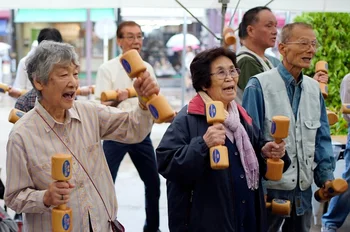
Sean bienvenidos japonistasarqueologicos a una nueva actualidad del país del sol naciente, en esta ocasión en el tema de actualidad de esta opción será la natalidad y de cómo afectará al país dicho esto pónganse cómodos que empezamos. - La esperanza de vida en Japón es la más alta del mundo, llegando a los 100 años, lo cual lo convierte en el país más longevo del mundo, Japón para 2046, según nuevos estudios llevados a cabo por National Geographic, será de 37.5% de población envejecida. - La tasa de natalidad y los estudios realizados por Statista Research Department en septiembre 29, 2022 natalidades son de 1,69. Seguramente llegue a un punto en el que se llegará a un equilibrio entre la tasa de natalidad y la tasa de mortalidad. - ¿Cuál será el destino de Japón? ¿Qué opinan al respecto? Espero que os haya gustado y nos vemos en próximas publicaciones que pasen una buena semana. - 今回は「出生率」と「出生率の推移」についてです。 - 日本の平均寿命は、それが世界で最も長く生きている国になり、100年に達し、世界で最も高いです、日本は2046年までに、ナショナルジオグラフィックが実施した新しい研究によると、人口の37.5%が高齢化されることになります。 - 2022年9月29日にStatista Research Departmentが行った研究によると、出生率・出生数は1.69である。おそらく、出生率と死亡率が均衡する地点に達するだろう。 - 日本の運命はどうなるのか、あなたはどう思いますか?私はあなたがそれを好きで、将来の記事であなたを参照してください願っています良い週を持っています。 - Welcome japanistasarqueologicos to a new news from the country of the rising sun, this time the topic of this option will be the birth rate and how it will affect the country, that said, make yourselves comfortable and let's start. - Life expectancy in Japan is the highest in the world, reaching 100 years, which makes it the longest living country in the world, Japan by 2046, according to new studies conducted by National Geographic, will be 37.5% of the population aged. - The birth rate and birth rates are 1.69, according to studies conducted by Statista Research Department on September 29, 2022. It will probably reach a point where a balance will be reached between the birth rate and the death rate. - What will Japan's fate be, and what do you think about it? I hope you liked it and see you in future posts have a good week.

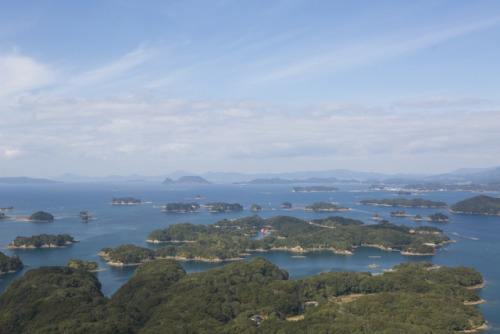
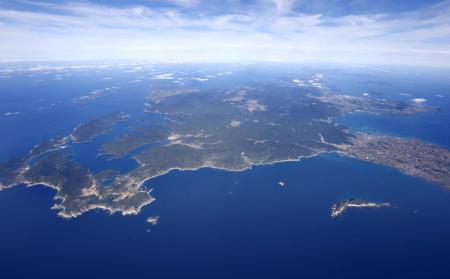

Sean bienvenidos japonistaarqueológicos, a una nueva actualidad del país del sol naciente. En este caso os comentaré que se han actualizado los datos del número de islas del archipiélago Japonés, dicho esto pónganse cómodos que empezamos. - La información viene de la agencia Geoespacial de Japón, el número de islas son de 14125 en todo el país, más del doble del número anunciado hasta ahora, en 1987 el cálculo era de 6852 islas. - El número de islas en cada prefectura Nagasaki 1479 Hokkaido 1473 Kagoshima 1256 Iwate 861 Okinawa 691. - ¿Qué opinan al respecto? Espero que tengan una buena semana y nos vemos en próximas publicaciones de Japón - 日出づる国から新しいニュースへようこそ。今回は、日本列島の島の数が更新されたことをお伝えします。 - 国土地理院からの情報ですが、日本全国の島の数は14125で、今まで発表されていた数(1987年は6852島)の2倍以上になっています。 - 各都道府県の島嶼数 長崎県 1479 北海道 1473 鹿児島県 1256 岩手県 861 沖縄県 691 - いかがでしょうか?今週も良い一週間をお過ごしください。また、今後の日本からの投稿でお会いしましょう。 - Welcome to a new update from the land of the rising sun. In this case I will tell you that we have updated the data on the number of islands in the Japanese archipelago, so make yourselves comfortable and let's get started. - The information comes from the Geospatial agency of Japan, the number of islands is 14125 in the whole country, more than double the number announced until now, in 1987 the estimate was 6852 islands. - The number of islands in each prefecture Nagasaki 1479 Hokkaido 1473 Kagoshima 1256 Iwate 861 Okinawa 691. - What do you think about it? I hope you have a good week and see you in future posts from Japan.
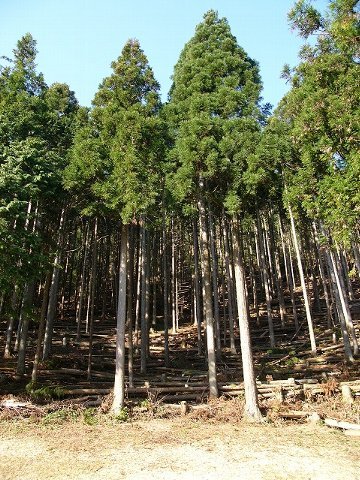





Sean bienvenidos japonistasarqueológicos a una nueva entrega en esta ocasión os hablaré sobre Cryptomeria japonica (スギ), más popularmente conocido como el cedro japonés, una vez dicho esto pónganse cómodos que empezamos. - Se localizan al sur de Hokkaido (ほっかいどう) el cedro es el árbol más alto de Japón, y los árboles más altos superan los 50 m. Además son los árboles más longevos de Japón,hay árboles que tienen entre 2000 y 3000 años en todo Japón. - Espero que os guste ¿lo conocían? os deseo una feliz semana y nos vemos en próximas publicaciones del país del sol naciente. - 今回は、杉の木(Cryptomeria japonica, スギ)についてのお話です。 - 北海道の南に位置するスギは、日本で最も高い木で、高い木は50mを超えます。また、日本で最も長寿の木でもあり、日本各地に樹齢2000年から3000年の木があるそうです。 - それでは、今週も一週間、どうぞよろしくお願いいたします。 - Welcome japonistasarqueológicos to a new installment in this occasion I will talk about Cryptomeria japonica (スギ), more popularly known as the Japanese cedar, having said that, make yourselves comfortable and let's get started. - Located south of Hokkaido (ほっかいどう) the cedar is the tallest tree in Japan, with the tallest trees exceeding 50m. They are also the longest-lived trees in Japan,there are trees that are between 2000 and 3000 years old all over Japan. - I hope you like it, did you know it? I wish you a happy week and see you in future publications from the land of the rising sun.




Sean bienvenidos japonistasarqueologicos a una nueva entrega del país del sol naciente en la que os explicaré que es el tsuyu, una vez dicho esto pónganse cómodos que empezamos. - ¿Qué es el tsuyu? ¿En qué consiste? El tsuyu, en hiragana つゆ y en kanji corresponde a 梅雨. Esto corresponde a los meses de verano en Japón: Mayo a julio seguramente todos habréis visto la película de Tenki no ko, del director Makoto shinkai, en el que se puede apreciar muy bien este fenómeno por poner un ejemplo. En estos dos meses caen grandes trombas de agua a raudales que para algunos le resultará placentero y otros una tortura¿Qué es para vosotros?, ¿os gustan los periodos de lluvia? - Espero que os haya gustado y nos vemos en próximas publicaciones que pasen una linda semana. - 日本の考古学者諸君、ようこそ、日出ずる国の新連載へ。ツユとは何かを説明しよう。 - ツユとは何か?つゆとは、ひらがなでは「つゆ」、漢字では「梅雨」にあたる。皆さんは新海誠監督の映画『天 気の子』をご覧になったことがあるだろう。この2ヶ月間、滔々と降り注ぐ大雨は、ある人にとっては喜びであり、ある人にとっては拷問である。 あなたは雨の時期が好きですか? - それでは、また次の記事でお会いしましょう。 - Welcome, Japanese archaeologists, to a new installment of the land of the rising sun in which I will explain to you what the tsuyu is, having said that, make yourselves comfortable and let's get started. - What is tsuyu and what does it consist of? Tsuyu, in hiragana つゆ and in kanji it would correspond to 梅雨. This corresponds to the summer months in Japan: May to July, you have probably all seen the film Tenki no ko, by director Makoto Shinkai, in which this phenomenon can be seen very well, to give an example. In these two months, huge downpours of water fall in torrents, which for some people will be a pleasure and for others a torture. What is it like for you, do you like periods of rain? - I hope you liked it and see you in the next posts have a nice week.


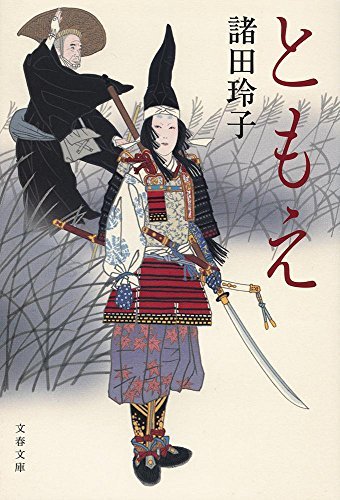



Sean bienvenidos, japonistasarqueológicos a una nueva entrega en esta ocasión hablaremos de Tomoe Gozen una vez dicho esto pónganse cómodos que empezamos. - Tomoe Gozen en hiragana (ともえごぜん) pertenece a Onna-bugeisha (女武芸者) mujeres luchadoras en japonés se conoce más como Ba Yuqian, al hablar de samurais se nos viene imágenes de hombres, las mujeres también tuvieron un gran papel y Tomoe Gozen fue una mujer que participó en el conflicto Genpei 1180-1192, su existencia está un tanto discutida. - Kiso Yoshinaka es muy hábil en las artes marciales y es bueno en el uso de arcos y flechas, os pondré una foto de la Estatua de Kiso Yoshinaka y Bagomae en la prefectura de Nagano. Fue una gran estratega, ya que cuenta la leyenda que en la Batalla del paso de Kuligara uso toros de fuego. - El Cantar de Heike: Son los poemas clásicos más importantes de la historia y la literatura japonesa, en el cual hablan de un sinfín de personajes y leyendas de la época. Fue escrito a principios del siglo XIII. - Espero que os haya gustado, os deseo una feliz semana y nos vemos en próximas publicaciones. 考古学ジャポニストの皆さん、新しい連載へようこそ。今回は巴御前についてお話します。そうは言っても、気を楽にしてから始めましょう。 - ひらがなで「ともえごぜん」は女武芸者に属し、日本語では巴玉銭として知られる女性戦士です。武士といえば男性のイメージが思い浮かびますが、女性も大きな役割を果たしました。 1180年から1192年にかけて源平合戦に参加した女性ですが、その存在については若干の議論があります。 - 木曽義仲は武芸に優れ、弓矢の扱いにも長けており、長野県にある木曽義仲像と馬籠前の写真を載せておきます。 クリガラ峠の戦いでは火の雄牛を使用したという伝説があるため、彼女は優れた戦略家でした。 - 平家の歌: 平家の歌は、日本の歴史と文学において最も重要な古典詩であり、その中で当時の無数の登場人物や伝説について語られています。 13世紀初頭に書かれました。 - 気に入っていただけたなら幸いです。楽しい一週間をお過ごしください。また今後の出版物でお会いしましょう。 Welcome, Archaeological Japonists to a new installment, this time we will talk about Tomoe Gozen, having said that, make yourself comfortable and let's start. - Tomoe Gozen in hiragana (ともえごぜん) belongs to Onna-bugeisha (女武芸者) female fighters in Japanese is better known as Ba Yuqian, when talking about samurai images of men come to mind, women also had a great role and Tomoe Gozen was a woman who participated in the Genpei conflict 1180-1192, her existence is somewhat disputed. - Kiso Yoshinaka is very skilled in martial arts and is good at using bows and arrows, I will put you a photo of Kiso Yoshinaka Statue and Bagomae in Nagano Prefecture. She was a great strategist, since she tells the legend that in the Battle of Kuligara Pass she used bulls of fire. - The Song of Heike: They are the most important classical poems in Japanese history and literature, in which they speak of an endless number of characters and legends of the time. It was written at the beginning of the 13th century. - I hope you liked it, I wish you a happy week and see you in future publications.






Sean bienvenidos, japonistasarqueológicos a una nueva entrega, en esta ocasión hablaré sobre Obon el festival de los difuntos una vez dicho esto pónganse cómodos que empezamos. - En Japón, en los días de agosto, del 13 al 16, se celebra el Obon, que lo podemos ver en multitud de animes, películas y doramas ya hice mención sobre que estas cosas no solo hay que verlas, como meros dibujos, ya que tienen mucho sentido cultural e histórico. Esta festividad tiene muchos elementos muy característicos como el Gozan no Okuribi también llamado Daimonji, muy característico de finales de estas fiestas, porque suelen ser una serie de dibujos alguno de un torii y otros como el kanji de fuego, por mencionar algunos ejemplos. - Los pepinos(se utiliza para cuando el difunto llega) y berenjenas(caso contrario cuando el difunto se va ) simbolizan la llegada y el regreso del difunto al más allá. Hay muchos países que celebran esta festividad de formas distintas, pero todos tienen en común que honran a sus antepasados, es una festividad que tiene 400 a 500 años de antigüedad y es de origen budista. Para finalizar la publicación mencionaremos el Awa-Odori, (Odori significa bailar) y data del siglo XVI. - Espero que os guste y nos vemos en próximas publicaciones, que pasen una buena semana.
日本の考古学者の皆さん、新しい回へようこそ。今回はお盆についてお話ししましょう。 - 日本では、8月の13日から16日にかけて、お盆の行事が行われる。 アニメや映画、ドラマなどでもよく見かけるが、これらは単なる絵空事ではなく、多くの文化的、歴史的な意味を持っていることはすでに述べた。例えば、五山の送り火は「大文字」とも呼ばれ、鳥居の絵や「火」という漢字の絵など、お盆の風物詩となっている。 - キュウリ(故人が来るときに使う)とナス(故人が帰るときに使う)は、故人があの世に到着し、戻ってくることを象徴している。この祭りをさまざまな方法で祝う国はたくさんあるが、先祖を敬うという点では共通している。阿波踊りは16世紀に遡る。 - それでは、良い一週間を。
Welcome, Japanese archaeologists to a new installment, this time I will talk about Obon, the festival of the dead, and with that said, make yourselves comfortable and let's get started. - In Japan, in the days of August, from the 13th to the 16th, Obon is celebrated, which we can see in many anime, movies and doramas. I have already mentioned that these things should not only be seen as mere drawings, as they have a lot of cultural and historical meaning. This festivity has many very characteristic elements such as the Gozan no Okuribi also called Daimonji, very characteristic of the end of these festivities, because they are usually a series of drawings of a torii and others such as the kanji of fire, to mention some examples. - Cucumbers (used for when the deceased arrives) and aubergines (otherwise when the deceased leaves) symbolise the arrival and return of the deceased to the afterlife. There are many countries that celebrate this festival in different ways, but they all have in common that they honour their ancestors, it is a festival that is 400 to 500 years old and is of Buddhist origin. To end the publication we will mention the Awa-Odori, (Odori means dancing) and dates back to the 16th century. - I hope you like it and see you in future publications, have a nice week.
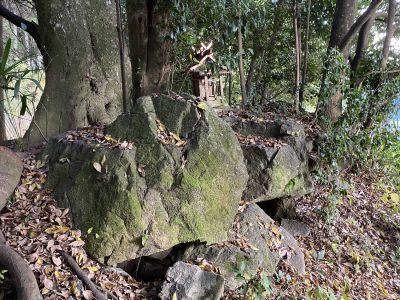


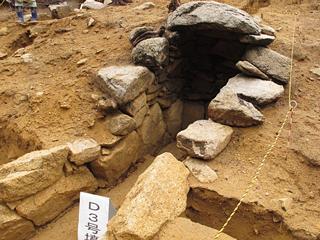

Sean bienvenidos, japonsistasarqueológicos, a una nueva entrega arqueológica, en esta ocasión os voy a hablar del túmulo Shofuku-ji una vez dicho esto, pónganse cómodos que empezamos. - ¿Dónde se localiza el túmulo Shofuku-ji? Se localiza en la ciudad de Kawanishi, en la prefectura de Hyōgo, localizado a su vez en la región de Kansai. La cámara funeraria se descubrió en la era Meiji. En 1934, el Dr. Sueharu Umehara de la Universidad de Kyoto realizó un estudio de campo y en la década de 1970, se realizó un estudio llevado a cabo por la Junta de Educación de la ciudad de Kawanishi que descubrió un ataúd de madera en la que se enterraron: puntas de flecha de hierro, espadas de hierro. - Data del siglo V y el siglo V y corresponde al periodo Kofun, con una longitud total de 40 m y fue construido a principios del siglo VI. Se descubrió un haniwa, que fue desenterrado durante la excavación, y se hizo de una manera muy similar al haniwa en la región de Owari que corresponde a la actual prefectura occidental de Aichi. - Espero que os haya gustado y nos vemos en próximas publicaciones, que pasen una buena semana. 日本の考古学者の皆さん、ようこそ!今回は、正福寺古墳についてお話します!では、早速始めましょう。 - 正福寺塚はどこにあるのですか?関西地方に位置する兵庫県川西市にあります。古墳が発見されたのは、明治時代です。1934年に京都大学の梅原末治博士が現地調査を行い、1970年代には川西市教育委員会の調査で木棺が発見され、その中に鉄鏃、鉄剣、鉄刀が埋められていました。 - 5~5世紀の古墳時代に相当し、全長40m、6世紀初頭に造られたものである。発掘調査で出土した埴輪は、現在の愛知県西部の尾張地方にある埴輪と酷似した作りのものが発見されています。
Welcome, Japanese archaeologists, to a new archaeological instalment, this time I am going to talk to you about the Shofuku-ji tumulus, having said that, make yourselves comfortable and let's get started. - Where is the Shofuku-ji mound located? It is located in the city of Kawanishi, Hyōgo Prefecture, located in the Kansai region. The burial chamber was discovered in the Meiji era. In 1934, Dr. Sueharu Umehara of Kyoto University conducted a field survey and in the 1970s, a survey conducted by the Kawanishi City Board of Education uncovered a wooden coffin in which were buried: iron arrowheads, iron swords, and iron swords. - It dates from the 5th-5th century and corresponds to the Kofun period, with a total length of 40 m and was built in the early 6th century. A haniwa, which was unearthed during excavation, was discovered and made in a very similar manner to the haniwa in the Owari region of what is now western Aichi Prefecture. - I hope you liked it and see you in future posts, have a nice week.





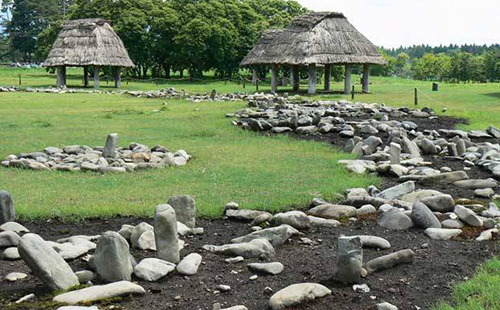
Sean bienvenidos, japonsitasarqueologícos a una nueva entrega en la que hablaremos de un Trending Topic, ya que el país del sol naciente está de moda pues le vamos a sacar beneficios y no es el único tema que están sabiendo explotar, para sacarle el mayor partido. - Lo que vengo a referirme, es que las modas son puro negocio, de lo más nocivo que nos podemos llevar a la cara, antes de que Japón estuviera de moda ya había muchos fakes, pero ahora se han duplicado e incluso triplicado. No hay que creerse todo lo que leamos por internet, siempre hay que cuestionarse las cosas, en este caso vamos a sentarnos, en dos monumentos uno localizado en Inglaterra y otro en japón. - El primero, se trata de stonehenge: Construido en el cuarto mileno 3100 antes de nuestra era, que cada vez se actualizan sus funciones la última más reciente es que no puede ser usado como un calendario solar. El segundo, se trata de Isedōtai site, localizado en la prefectura de Akita, en la región de Tōhoku en el noroeste de Japón, construido en el quinto milenio 4000 a.c en el jomon final. Se usó como calendario solar y posiblemente para los solsticios de verano e invierno. - El tema de esta publicación no es hablar de ninguno de los dos en profundidad, sino criticar a los lucidos, que sitúan stonehenge y Isedōtai site en la misma recta cronológica lo cual es una falacia por que hay por lo menos 1100 a 1500 años de diferencia aproximadamente entre ambas construcciones. - Ese es el problema del occidentalismo y eurocentrismo sobre todo la manía de colocarlo todo en una recta cronológica las fechas son algo aproximadas al igual que las rectas temporales. - Espero que os haya gustado y nos vemos en próximas publicaciones que pasen una buena semana.
Welcome, japonsitasarchaeologists, to a new edition in which we will talk about a Trending Topic, since the country of the rising sun is in fashion, we are going to make the most of it and it is not the only topic that they are knowing how to exploit, to make the most of it. - What I am referring to is that fashions are pure business, the most harmful thing we can take to our faces. Before Japan was in fashion there were already many fakes, but now they have doubled and even tripled. We should not believe everything we read on the internet, we should always question things, in this case we are going to sit on two monuments, one located in England and the other in Japan. - The first one is stonehenge: Built in the fourth millennium 3100 B.C., its functions are updated every time, the latest one is that it cannot be used as a solar calendar. The second is the Isedōtai site, located in Akita prefecture, in the Tōhoku region of northwestern Japan, built in the fifth millennium 4000 BC in the final jomon. It was used as a solar calendar and possibly for the summer and winter solstices. - The subject of this publication is not to discuss either in depth, but to criticise the lucid, who place stonehenge and Isedōtai site in the same chronological line which is a fallacy because there is at least 1100 to 1500 years difference approximately between the two constructions. - That is the problem of westernism and eurocentrism, especially the mania of placing everything on a chronological line, the dates are somewhat approximate, as are the time lines. - I hope you liked it and see you in future publications. Have a nice week.
旭日旗が流行しているので、それを最大限に利用するつもりだ。そして、彼らがそれを最大限に利用する方法を知っているのは、この話題だけではない。
私が言いたいのは、ファッションは純粋なビジネスであり、最も有害なものであるということだ。 日本が流行する前からすでに多くの偽物があったが、今では倍増し、3倍にもなっている。インターネット上の情報を鵜呑みにするのではなく、常に物事を疑ってみる必要がある。
ひとつはストーンヘンジで、紀元前3100年の第四千年紀に建てられた。 もうひとつは、東北地方の秋田県にある伊勢堂岱遺跡で、紀元前4000年、縄文末期の第5千年紀に作られた。
太陽暦として使われ、おそらく夏至と冬至にも使われた。
本書の主題は、どちらか一方を深く論じることではなく、ストーンヘンジと伊勢堂岱遺跡を同じ年代線上に置く明晰な人々を批判することである。
それが西洋主義とヨーロッパ中心主義の問題点であり、特にあらゆるものを年代順に並べようとするマニアの問題点である。
お気に召していただけたなら幸いである。 それではまた。

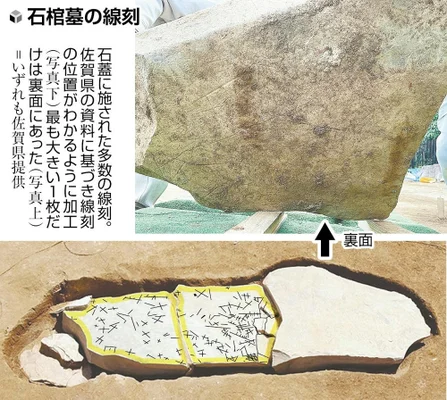



Sean bienvenidos, japonistasarqueológicos, a una nueva entrega de arqueología nipona, una vez dicho esto pónganse cómodos qué empezamos. - Nos volvemos a trasladar a la prehistoria japonesa que, cada día, nos sorprende con un nuevo hallazgo arqueológico. Las ruinas de Yoshinogari, datan del periodo Yayoi, pero en este caso del Yayoi tardio y se localizan en la prefectura de saga. - Se trata de una tumba de unos dos metros de largo¿Quién estaba enterrado en ella? Futuras investigaciones arrojarán luz. ¿Qué opinan ustedes sobre este hallazgo? - Os deseo una feliz semana y nos vemos en próximas publicaciones. 日本の考古学者たちよ、ようこそ!それでは、くつろいでいただき、始めましょう。 - 毎日、新しい考古学的発見で私たちを驚かせてくれる日本の先史時代へと話を戻します。吉野ヶ里遺跡は、佐賀県にある弥生時代後期の遺跡です。 - 古墳の長さは約2メートル。 誰が埋葬されていたのだろうか。この発見は、今後の研究によって明らかにされるでしょう。 あなたはどう思われますか? - それでは、今週もよろしくお願いします。また、今後の記事でお会いしましょう。 - Welcome, Japanese archaeologists, to a new instalment of Japanese archaeology, so make yourselves comfortable and let's get started. - We move back to Japanese prehistory, which surprises us every day with a new archaeological find. The ruins of Yoshinogari, dating back to the Yayoi period, but in this case to the late Yayoi period, are located in the prefecture of Saga. - The tomb is about two metres long. Who was buried in it? Further research will shed light on this discovery. What do you think about it? - I wish you a happy week and see you in future posts.

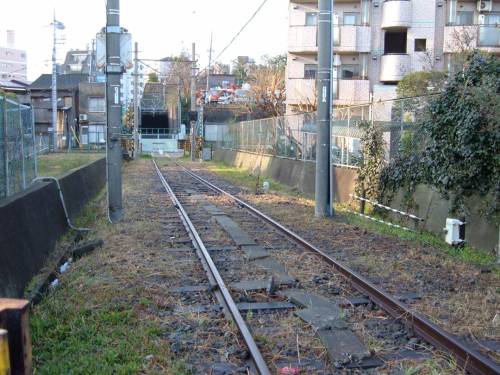

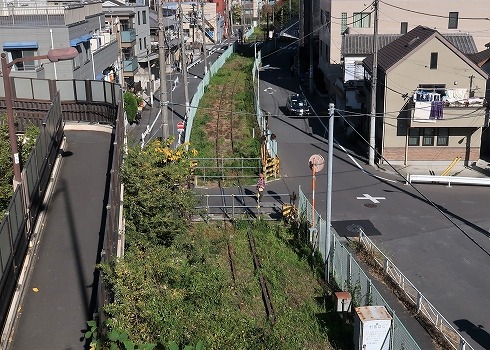

Sean bienvenidos a un Japón distinto del que muchos turistas pasan de largo por las grandes ciudades turísticas. — Espero que os guste y nos vemos en próximas publicaciones, que pasen una buena semana. - 観光都市で多くの観光客が通り過ぎる日本とは異なる日本へようこそ。 - 今後の記事でお会いできることを楽しみにしています。 - Welcome to a different Japan from the one that many tourists pass by in the big tourist cities. - I hope you like it and see you in future posts, have a nice week.





Sean bienvenidos japonistasarqueológicos, a una nueva entrega de arqueología nipona en esta ocasión os hablaré del castillo de Sunpu que se encuentra en la ciudad de Shizuoka, en la Prefectura de Shizuoka. - El castillo de Sunpu, fue en el lugar en donde vivó, Ieyasu Tokugawa en los siglos XVI-XVII, donde pasó sus últimos años de vida, las ruinas de las torres del castillo que se construyeron con diferentes métodos de construcción durante el período Sengoku y el período Edo. - Sunpu Castle Park es uno de los lugares turísticos representativos de la ciudad de Shizuoka es un parque que utiliza las ruinas del castillo, macizo de flores Aoi lleva el logo de la familia de Tokugawa como proyecto conmemorativo del 400 aniversario de Ieyasu Tokugawa. El área está bajo excavación, se encuentra en la zona noroeste y se está realizando actualmente la excavación de la torre del castillo. - Hay una parte del castillo que está muy reconstruida y que se puede visitar con un módico precio, dado que el segundo piso y los superiores no se pueden abrir al público debido a la ley de construcción, el piso se quita para que la estructura se pueda ver desde abajo. - La Puerta Este/Tatsumi Yagura, está rodeada por un foso y está cerca de la estación Shin-Shizuoka. La torreta Tatsumi Higashigomon y Tatsumi Yagura están conectadas,el Tatsumi Yagura fue restaurado en 1989 y la puerta este se restauró en 1996. La entrada al jardín Momijiyama está cerca de la puerta norte del parque del castillo de Sumpu. Hay un gran estanque en el centro, y está dividido en 9 áreas que se asemejan al paisaje de Shizuoka con flores de temporada. Hay una estatua de Yaji-san y Kita-san fue construida para conmemorar el 200 aniversario. - En 1585, Tokugawa Ieyasu comenzó la construcción del castillo y en 1588 se completó la torre del castillo Sunpu.Incluso después de que Ieyasu empezará el shogunato de Edo en 1603 y se mudó a Edo, la familia Tokugawa continuó preparándolo.Se dice que es el lugar donde Ieyasu regresó al castillo de Sumpu en 1607, se retiró y murió en 1616 a la edad de 75 años. - Espero que os haya gustado y nos vemos en próximas publicaciones, pasen una buena semana.
Welcome, Japanese archaeologists, to a new instalment of Japanese archaeology. This time I will be talking about Sunpu Castle, located in the city of Shizuoka, Shizuoka Prefecture. - Sunpu Castle was the place where Ieyasu Tokugawa lived in the 16th-17th centuries, where he spent the last years of his life. The ruins of the castle towers were built with different construction methods during the Sengoku and Edo periods. - Sunpu Castle Park is one of the representative tourist sites of Shizuoka City is a park that uses the ruins of the castle, Aoi flowerbed bears the logo of the Tokugawa family as a project commemorating the 400th anniversary of Ieyasu Tokugawa. The area is under excavation, it is located in the northwest area and the excavation of the castle tower is currently underway. - There is a part of the castle that is heavily reconstructed and can be visited for a small fee, as the first floor and above cannot be opened to the public due to construction law, the floor is removed so that the structure can be seen from below. - The East Gate/Tatsumi Yagura, is surrounded by a moat and is close to Shin-Shizuoka Station. The Tatsumi Higashigomon turret and Tatsumi Yagura are connected, the Tatsumi Yagura was restored in 1989 and the east gate was restored in 1996. The entrance to Momijiyama Garden is near the north gate of Sumpu Castle Park. There is a large pond in the centre, and it is divided into 9 areas that resemble the Shizuoka landscape with seasonal flowers. There is a statue of Yaji-san and Kita-san was built to commemorate the 200th anniversary. - In 1585, Tokugawa Ieyasu started the construction of the castle and in 1588 the Sunpu castle tower was completed. Even after Ieyasu started the Edo shogunate in 1603 and moved to Edo, the Tokugawa family continued to prepare it. It is said to be the place where Ieyasu returned to Sumpu castle in 1607, retired and died in 1616 at the age of 75. - I hope you liked it and see you in future posts, have a nice week.
日本の考古学者の皆さん、新しい日本考古学へようこそ。今回は、静岡県静岡市にある駿府城についてお話します。 - 駿府城は、16 世紀から 17 世紀にかけて徳川家康が晩年を過ごした場所です。天守閣跡は、戦国時代から江戸時代にかけてさまざまな工法で築かれました。
-
静岡市を代表する観光地の一つである駿府城公園は、徳川家康公400年記念事業として城跡を利用した公園で、葵花壇には徳川家のマークが刻まれています。発掘調査中のエリアで、北西部に位置し、現在天守閣の発掘調査が行われています。
-
城の一部は大規模に復元されており、1階以上は建築法の関係で一般公開できないため、床を撤去して下から構造を見学できるようになっており、低料金で見学できる。 。
-
新静岡駅からもほど近い、お堀に囲まれた東門・巽櫓。巽東御門櫓と巽櫓はつながっており、巽櫓は1989年、東門は1996年に復元されました。紅葉山庭園の入り口は駿府城公園の北門近くにあります。中央に大きな池があり、季節の花々が彩る静岡の風景をイメージした9つのエリアに分かれています。弥次さんと喜多さんの像があり、200年を記念して建てられました。
-
1585年に徳川家康が築城を開始し、1588年に駿府城天守閣が完成しました。 1603年に家康が江戸幕府を開き、江戸に移った後も、徳川家では仕込み続けられました。 1607年に家康が駿府城に戻り、隠居し、1616年に75歳で亡くなった場所といわれています。
-
気に入っていただければ幸いです。今後の投稿でお会いしましょう。良い一週間をお過ごしください。






Sean bienvenidos, japonistasarqueologos, a una nueva entrega en esta ocasión os presento por encima a un nuevo Yōkai una vez dicho esto pónganse cómodos que empezamos. - En todo el mundo hay nutrias, pero por desgracia, están desapareciendo por qué el hombre las cazaba para pieles etc. Actualmente, quedan muy pocas y es ilegal tenerlas como mascota solo si tienes permiso. - Pero en este caso nos trasladamos a Japón y comentaré por encima a las nutrias de río, son consideras un demonio o espíritu llamados Yōkai y reciben el nombre de Kawauso y en hiragana (かわうそ), hay muchos animes que abarcan este tema. ¿Conocían este Yōkai? - Espero que os guste y nos vemos en próximas publicaciones, que pasen una buena semana. - 日本びいきの皆さん、考古学者の皆さん、ようこそ新連載へ。今回は新しい妖怪を紹介しよう。 - カワウソは世界中に生息しているが、人間が毛皮などのために狩りをしたため、残念ながら姿を消しつつある。現在ではほとんど残っておらず、ペットとして飼うには許可を得なければ違法となっている。 - カワウソは妖怪と呼ばれ、ひらがなで「かわうそ」と呼ばれ、この話題を扱ったアニメがたくさんあります。 この妖怪を知っていますか? - それでは、また次の記事でお会いしましょう。 - Welcome, Japanophiles and archaeologists, to a new installment, this time I will introduce you to a new Yōkai, having said that, make yourselves comfortable and let's get started. - There are otters all over the world, but unfortunately, they are disappearing because humans used to hunt them for fur etc. Nowadays, there are very few of them left and it is illegal to keep them as pets only if you have a permit. - But in this case we move to Japan and I will comment on the river otters, they are considered a demon or spirit called Yōkai and are called Kawauso and in hiragana (かわうそ), there are many anime that cover this topic. Did you know this Yōkai? - Hope you like it and see you in next posts, have a nice week.

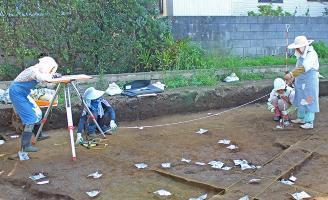
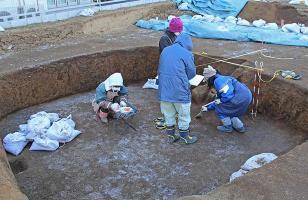

Sean bienvenidos japonistasarqueológicos, a una nueva entrega de arqueología japonesa, una vez dicho esto pónganse cómodos que empezamos. - Antes que nada:¿Qué entendemos por una excavación arqueológica? Consiste en extraer los restos materiales de las culturas del pasado a esto se le llama cultura arqueológica por ejemplo: los restos viviendas de fosa y hoyos. Los restos arqueológicos, se localizan en la Ciudad de Narashino, en la prefectura de Chiba, los restos podrían tratarse del periodo jomon (15.000/16.000 a.c) - Espero que os haya gustado y nos vemos en próximas publicaciones, que pasen una buena semana. - 日本の考古学者たちよ、ようこそ。そう言われたら、くつろいで、さっそく始めましょう。 - まず、考古学的発掘とはどういうことかというと、過去の文化の物質的遺構を取り出すことであり、これを考古学的文化と呼びます。例えば、竪穴住居跡やピット跡などです。千葉県習志野市にあるこの遺跡は、縄文時代(紀元前15,000~16,000年)のものと思われます。 - 気に入っていただけたでしょうか、また今後の記事でお会いしましょう、良い一週間をお過ごしください。 Welcome, Japanese archaeologists, to a new installment of Japanese archaeology, and once that's been said, make yourselves comfortable and let's get started. - First of all: What do we mean by an archaeological excavation? It consists of extracting the material remains of the cultures of the past, this is called archaeological culture, for example: the remains of pit dwellings and pits. The archaeological remains, located in Narashino City, Chiba Prefecture, may date back to the Jomon period (15,000/16,000 BC). - I hope you liked it and see you in future posts, have a nice week.


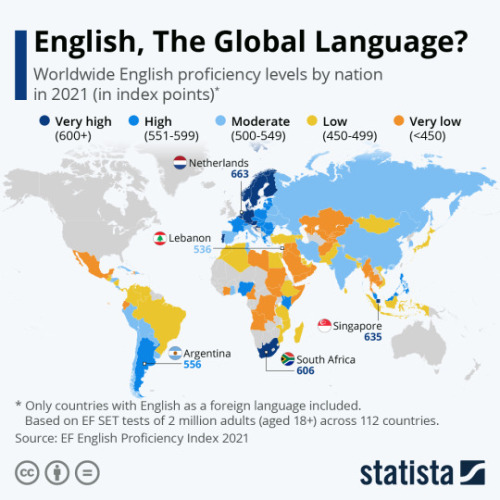
Parte 2:Razones por las que a los japoneses jamás se le va a dar bien el inglés: Sean bienvenidos, japonistasarqueológicos, a una nueva entrega, en esta ocasión hablamos del inglés en Japón, una vez dicho esto pónganse cómodos qué empezamos. - Por la que a los japoneses les cuesta el inglés más de una te sorprenderá, los japoneses para poder aprender inglés desde cero les lleva alrededor de 500 horas alcanzar el nivel principiante; sin embargo, se necesitan unas 250 horas para aprender coreano o indonesio al mismo nivel principiante. Una de las razones por las que los japoneses no son buenos en inglés es debido a la pronunciación, esto es un hecho. - La estructura gramatical del inglés es: SVO (sujeto-verbo-objeto) donde el verbo va primero, mientras que en japonés, SOV (Sujeto-Objeto-Verbo) donde el verbo va al final. Además, la estructura de las oraciones difiere entre el inglés y el japonés, el inglés es muy estricto en cuanto al orden de las palabras. En japonés utilizamos unas 120 palabras en un minuto de conversación normal. El inglés emplea aproximadamente 1,5 veces más palabras, razón por la cual los japoneses sienten que hablan inglés más rápido. Por ejemplo, la palabra japonesa “personalidad” tiene tres fonemas. Cuando se trata de inglés, necesitamos cinco fonemas: pa/so/na/li/ti, y para transmitir la misma información, necesitamos hablar más rápido. La razón por la que a los japoneses les resulta difícil escuchar y hablar inglés es probablemente porque se les exige que usen habilidades que normalmente no emplean. パート2:日本人が決して英語が得意にならない理由:日本の考古学者たちよ、新しい回へようこそ!今回は日本の英語について話す。 - なぜ日本人は英語が苦手なのか?日本人がゼロから英語を学んで初級レベルに達するには約500時間かかるが、韓国語やインドネシア語を学んで同じ初級レベルに達するには約250時間かかる。日本人が英語を苦手とする理由のひとつに発音があるが、これは事実である。 - 英語の文法構造はSVO(Subject-Verb-Object)で動詞が先に来るのに対し、日本語はSOV(Subject-Object-Verb)で動詞が最後に来る。また、文の構造も英語と日本語では異なり、英語は語順に非常に厳しい。日本語の場合、通常の会話で1分間に使う単語は約120語。英語はその約1.5倍の単語を使うので、日本人は英語を話すのが早いと感じるのです。例えば、日本語の「パーソナリティ」という単語には3つの音素がある。それが英語になると、パ/ソ/ナ/リ/ティの5つの音素が必要になり、同じ情報を伝えるためには、より速く話す必要がある。日本人が英語を聞くのも話すのも難しいと感じるのは、普段使わない能力を要求されるからだろう。 - 今後の記事でお会いできることを楽しみにしています。 Part 2: Reasons why the Japanese will never be good at English: Welcome, Japanese archaeologists, to a new instalment, this time we are talking about English in Japan, so make yourselves comfortable and let's get started. - Why the Japanese have a hard time with English more than one will surprise you, it takes the Japanese around 500 hours to learn English from scratch to reach beginner level; however, it takes around 250 hours to learn Korean or Indonesian to the same beginner level. One of the reasons why Japanese people are not good at English is because of pronunciation, this is a fact. - The grammatical structure of English is: SVO (Subject-Verb-Object) where the verb comes first, while in Japanese, SOV (Subject-Object-Verb) where the verb comes last. Also, sentence structure differs between English and Japanese, English is very strict about word order. In Japanese we use about 120 words in one minute of normal conversation. English uses about 1.5 times as many words, which is why Japanese people feel they speak English faster. For example, the Japanese word "personality" has three phonemes. When it comes to English, we need five phonemes: pa/so/na/li/ti, and to convey the same information, we need to speak faster. The reason why Japanese people find it difficult to listen to and speak English is probably because they are required to use skills they do not normally use. - I hope you like it and see you in future posts, have a good week.





Sean bienvenidos japonistasarqueológicos, a una nueva entrega de arqueología japonesa, una vez dicho esto pónganse cómodos que empezamos. - En esta ocasión os voy a presentar al padre de la arqueología moderna japonesa Edward.S.Morse, zoólogo estadounidense del siglo XIX y gran apasionado por el mundo japonés, su hallazgo más relevante fue el montículo de conchas de Omori, cuando lo divisó desde el tren ha raíz de dicho hallazgo, fue venado descubrió la cultura prehistoria Jomon. - En la foto se puede apreciar el Montículo de conchas Omori en el momento de la excavación de Morse, en el año 1878 aproximadamente. ¿Lo conocían? - Espero que os haya gustado y nos vemos en próximas publicaciones, que pasen una buena semana. - 日本の考古学者たちよ、ようこそ。そう言われたら、くつろいで、さっそく始めましょう。 - 今回は、近代日本考古学の父、エドワード・S・モース(19世紀アメリカの動物学者で、日本の世界をこよなく愛した人物)を紹介します。彼の最も重要な発見は、大森貝塚で、汽車から貝塚を発見したとき、先史時代の縄文文化を発見したのです。 - 写真は、1878年頃、モースが発掘した当時の大森貝塚です。 ご存知でしたか? - 気に入っていただけたでしょうか、また今後の記事でお会いしましょう、良い一週間をお過ごしください。 - Welcome, Japanese archaeologists, to a new installment of Japanese archaeology, and once that's been said, make yourselves comfortable and let's get started. - On this occasion I am going to introduce you to the father of modern Japanese archaeology Edward.S.Morse, 19th century American zoologist and great enthusiast for the Japanese world, his most relevant find was the Omori shell mound, when he spotted it from the train, he discovered the prehistoric Jomon culture. - The photo shows the Omori shell mound at the time of Morse's excavation in about 1878. Did you know it? - I hope you liked it and see you in future posts, have a nice week.




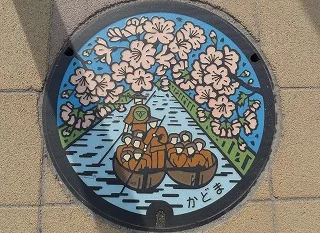
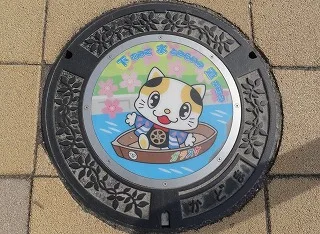

Sean bienvenidos japonistasarqueologos, a una nueva entrega en la cual os expondré una serie de fotos de tapas de alcantarilla japonesas. - Seguramente muchos os preguntaréis que tienen de especial porque están en todo el mundo civilizado, pero cada país tiene su estilo propio como en: Finlandia, entre otros muchos. - Pero Japón vive en el año 2050, seguramente que han escuchado esta expresión muchas veces y la verdad es que esto es una prueba de que Japón coge las cosas y las mejora a niveles planetarios. ¿Conocían esto? ¿Qué opinan? Os leo encantado. - Espero que os haya gustado y nos vemos en próximas publicaciones que pasen una buena semana. - 日本の考古学者の皆さん、日本のマンホールの蓋の写真を紹介する新連載へようこそ。 - マンホールの蓋は文明国中どこにでもあるが、国によって独自のスタイルがある:フィンランド、その他多数。 - しかし、日本は2050年に生きている。きっと、この表現を何度も耳にしたことがあるだろうが、真実は、日本が物事を捉え、惑星レベルまで改善している証拠なのだ。 あなたはこのことをご存知でしたか?私はそれを読んで喜んでいる。 - 今後の記事でお会いできることを楽しみにしています。 - Welcome Japanese archaeologists, to a new installment in which I will show you a series of photos of Japanese manhole covers. - Surely many of you will wonder what is so special about them because they are all over the civilized world, but each country has its own style as in: Finland, among many others. - But Japan is living in the year 2050, surely you have heard this expression many times and the truth is that this is proof that Japan takes things and improves them to planetary levels. Did you know this, what do you think? I am delighted to read it. - I hope you liked it and see you in future posts have a nice week.
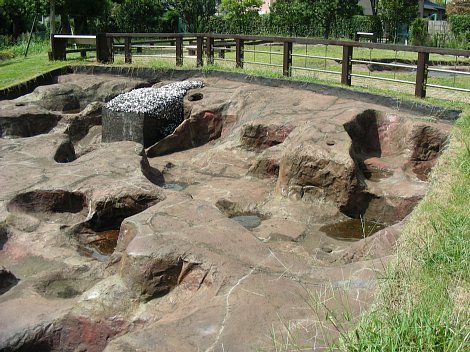





Sean bienvenidos japonistasarqueológicos, a una nueva entrega de arqueología japonesa, una vez dicho esto pónganse cómodos que empezamos. - En esta ocasión nos trasladamos: Al Museo del Parque Histórico Tobinodaique se localiza en la ciudad de Funabashi, prefectura de Chiba,los restos arqueológicos son del periodo Jomon y hay una 200 aproximadamente, en lo que respecta a las ruinas. Además las ruinas de Tobinodai tienen unos 8.000 años de antigüedad y son del período temprano.¿Conocían este yacimiento? - Espero que os haya gustado y nos vemos en próximas publicaciones, que pasen una buena semana. - 日本の考古学者たちよ、ようこそ。そう言われたら、くつろいで、さっそく始めましょう。 - 今回は移動します: 飛ノ台歴史公園博物館へ 千葉県船橋市にある飛ノ台歴史公園博物館は、縄文時代の遺跡で、遺跡としては約200件あります。 また、飛ノ台遺跡は約8,000年前の前期遺跡である。 - 気に入っていただけたでしょうか、また今後の記事でお会いしましょう、良い一週間をお過ごしください。 - Welcome, Japanese archaeologists, to a new installment of Japanese archaeology, and once that's been said, make yourselves comfortable and let's get started. - This time we move on: To the Tobinodaique Historical Park Museum is located in Funabashi City, Chiba Prefecture, the archaeological remains are from the Jomon period and there are about 200 of them, as far as ruins are concerned. In addition, the ruins of Tobinodai are about 8,000 years old and date back to the early period. - I hope you liked it and see you in future posts, have a nice week. Sources: Images owned by the museum Museum:Hinodai Shell Midden Museum. 出典:博物館所蔵の画像 博物館:日野台貝塚資料館






A marvel of prehistoric engineering, this sculptural group dates from around the 6th century AD and is a living archaeological relic of the emperor and Japanese glory. - 先史時代の技術の驚異であるこの彫刻群は、紀元6世紀ごろのもので、天皇と日本の栄光を伝える生きた考古学的遺物である。 - Todo una maravilla de la ingeniería prehistórica, este grupo escultórico data del siglo VI d.C aproximadamente, son todo una reliquia arqueológica viva el emperador y la gloria nipona.




Sean bienvenidos, japonistasarqueologicos a una nueva entrega en la que hablaremos sobre el asunto de Japón y las aguas residuales al mar una vez dicho esto pongan cómodos que empezamos. - Hace poco están en todos los medios de comunicación del mundo, que Japón tiene luz verde por la ONU para verter agua tratada en la planta nuclear de Fukushima en el accidente acontecido en 2011. - Hay más de 1.000 tanques y 1,34 millones de toneladas, posiblemente al 98% de la capacidad, además se está analizando el agua de mar y los alrededores de la central nuclear, actualmente se está analizando la concentración de tritio, los resultados estarán disponibles el día 25 por la tarde, previamente se habían tomado muestras de agua de los depósitos dando como resultado que era seguro, pero posiblemente tendrían que haber esperado más tiempo. - La población japonesa, se manifiesta al respecto porque esto va a generar problemas a largo plazo a la economía mundial. China suspende todas las importaciones de productos del mar japoneses, no se iba a quedar de brazos cruzados ¿Qué opinan ustedes al respecto? - Espero que os haya gustado y nos vemos en próximas publicaciones que pasen una buena semana.
考古学の日本研究者の皆様、ようこそ!今回は、日本と海への汚水問題についてお話しします。
最近、日本が2011年の福島原発事故の処理水を海洋投棄することを国連から許可されたことが世界中のメディアを賑わせている。
タンクは1000基以上、134万トンあり、おそらく容量の98%であろう。また、海水と原発周辺は分析中で、現在はトリチウムの濃度が分析されており、25日の午後に結果が出る予定である。以前は貯水池から水を採取し、安全であるという結果を出していたが、おそらくもっと待つべきだったのだろう。
日本国民が抗議しているのは、これが世界経済に長期的な問題を引き起こすからである。中国が日本産水産物の輸入を全面的に停止したのだから、黙って見過ごすわけがない。 これについてどう思う?
お気に召していただけたなら幸いである。 それではまた、良い一週間を。
Welcome, japonistasarqueologicos to a new installment in which we will talk about the issue of Japan and sewage into the sea, that said, make yourselves comfortable and let's get started. - It has recently been all over the world's media that Japan has been given the green light by the UN to dump treated water into the Fukushima nuclear power plant from the 2011 accident. - There are more than 1,000 tanks and 1.34 million tons, possibly at 98% of capacity, also the sea water and the surroundings of the nuclear plant are being analysed, currently the concentration of tritium is being analysed, the results will be available on the 25th in the afternoon, previously water samples had been taken from the reservoirs giving as a result that it was safe, but possibly they should have waited longer. - The Japanese people are protesting because this is going to create long-term problems for the world economy. China suspends all imports of Japanese seafood, they are not going to sit back and do nothing. What do you think about this? - I hope you liked it and I'll see you in future posts. Have a good week.

Sean bienvenidos, japonistasarqueológicos a una nueva entrega en esta ocasión os presento a otro arqueólogo que excavó en el yacimiento del Toro en la arqueología de posguerra. - En la publicación anterior comentamos, que era la arqueología de posguerra, mencionamos el milagro japonés y de cómo tras la guerra japón supo reponer sus heridas con cierta rapidez y el yacimiento del Toro es un testimonio de ello. En esta publicación, el personaje en esta ocasión se trata de,Takeji Kikukawa Nacido en 1932, que corresponde a la era Showa. - Fue estudiante de la escuela secundaria Fujieda Higashi localizada en la prefectura de Shizuoka, se dedicó a los periodo yayoi y Jamón estudiando su cultura material, sobre todo la cerámica del periodo yayoi y las pesas de piedra del periodo Jomon. - Espero que os haya gustado y nos vemos en próximas publicaciones que pasen una buena semana. 日本の考古学者たちよ、戦後の考古学で登呂遺跡を発掘したもう一人の考古学者を歓迎しよう。 - 前回は戦後考古学について、日本の奇跡と戦後日本がいかに早く立ち直ったか、そしてエル・トロ遺跡がその証であることをお話ししました。今回の登場人物は、1932年生まれの菊川武治である。 - 静岡県立藤枝東高等学校に在籍し、弥生・縄文時代の物質文化、特に弥生時代の陶磁器や縄文時代の石錘の研究に没頭した。 - それでは、また次回もお楽しみください。
Welcome, Japanese archaeologists, to another post-war archaeologist who excavated at the Toro site in post-war archaeology. - In the previous publication we talked about post-war archaeology, we mentioned the Japanese miracle and how after the war Japan was able to recover its wounds quite quickly and the site of El Toro is a testimony of that. In this publication, the character on this occasion is Takeji Kikukawa, born in 1932, which corresponds to the Showa era. - He was a student at Fujieda Higashi High School in Shizuoka Prefecture. He was devoted to the Yayoi and Jomon periods, studying their material culture, especially the ceramics of the Yayoi period and the stone weights of the Jomon period. - I hope you enjoyed it and see you in future posts have a nice week.

Sean bienvenidos, japonistasarqueológicos a una nueva entrega en esta ocasión os presento a uno de los arqueólogos que excavan en el yacimiento del Toro en la arqueología de posguerra. - ¿Qué es la arqueología de posguerra? Disciplina, que abarca la década de 1947-1999 tras la 2 guerra mundial, Japón se dedicó a realizar excavaciones en masa, además de salir de la situación de posguerra, mejorando el país e invirtiendo en el patrimonio cultural, para que la población estuviera entretenida con otros quehaceres por ejemplo en la década de los 50 surge el famoso milagro Japonés. - Nuestro personaje en esta ocasión se trata de, kenichi Miura nacido en 1932, después de la guerra en japón surge un movimiento llamado Bunka federación y todas las escuelas querían hacer algo por la cultura. Fue una gran labor por parte del país del sol naciente a pesar de la situación en la que se encontraba digno de administración. - Espero que os haya gustado y nos vemos en próximas publicaciones que pasen una buena semana. 日本の考古学者たちよ、戦後の登呂遺跡考古学の新連載へようこそ。 - 戦後考古学とは何か?第二次世界大戦後の1947年から1999年の10年間をカバーする学問分野であり、日本は戦後の状況を離れ、国を改善し、文化遺産に投資することに加えて、国民が他の仕事で楽しまれるように、大規模な発掘に専念していた、例えば、50年代の10年間で有名な日本の奇跡が生じた。 - 今回の登場人物は、1932年生まれの三浦健一です。 戦後、日本では文化連盟という運動が起こり、各学校が文化のために何かをしようとしました。日出づる國の行政にふさわしい状況にもかかわらず、これは偉大な仕事であった。 - それでは、また次号でお会いしましょう。 良い一週間を。 Welcome, Japanese archaeologists, to a new installment of the post-war archaeology of the Toro archaeological site. - What is post-war archaeology? Discipline, which covers the decade of 1947-1999 after World War II, Japan was dedicated to mass excavations, in addition to leaving the post-war situation, improving the country and investing in cultural heritage, so that the population was entertained with other tasks, for example in the decade of the 50's the famous Japanese miracle arose. - Our character on this occasion is Kenichi Miura, born in 1932. After the war in Japan, a movement called Bunka Federation arose and all the schools wanted to do something for culture. It was a great work on the part of the country of the rising sun in spite of the situation in which it found itself worthy of administration. - I hope you liked it and see you in the next publications. Have a nice week.
for more information/詳細については:https://www.shizuoka-toromuseum.jp/toro-site/people/people-intervew01/

Sean bienvenidos, japonistasarqueológicos al yacimiento arqueológico del toro, os presento a los dos últimos, estudiantes de la arqueología de posguerra, al final haré una pequeña conclusión personal, una vez dicho esto pónganse cómodos que empezamos. - Yoshie inaba Nacida en 1932 ¿Qué aportaciones hizo en el yacimiento? Anotó todos los datos que pudo, eso facilitó mucho las futuras investigaciones, además ayudó a la gente para que no fueran muy cargadas. Os pondré una foto del Uniforme de escuela secundaria Fuji - Girls. Sr. Wan Kikawa:Nacido en 1928, le contrató uno de ingeniería civil, en lo que es ahora Hinamigo, Prefectura de Nagasaki. Él encontró los siguientes objetos: dos brazaletes de cobre superpuestos y una espada de madera, que os pondré a continuación. - Conclusión personal: Estimada audiencia, no solo veáis a los yacimientos solo por los restos, también hay personas que ayudan a preservar los restos para próximas generaciones, además si no fueran por estas personas mencionadas, anteriormente seguramente sus aportaciones al yacimiento y a la historia de Japón no hubieran facilitado las cosas todos tenemos que poner nuestro grano de arena para crear la historia humana del pasado y del futuro. Además en aquella época dada persona con lo poco tenía aportan lo que podrían al yacimiento, sobre todo los agricultores de las cercanías, por ejemplo, las dificultades son la que hacen que prosperen las cosas. Espero que os haya gustado y nos vemos en próximas publicaciones que pasen una buena semana. 日本の考古学者の皆さん、エル・トロ遺跡へようこそ。戦後考古学の学生の皆さん、最後のお二人に私は最後に小さな個人的な結論を述べます。そうは言っても、気を楽にしてから始めましょう。 - Yoshie inaba 1932 年生まれ 彼女はこのサイトにどのような貢献をしましたか? 彼はできる限りすべてのデータを書き留めたので、今後の調査がはるかに容易になり、人々が過度の負担にならないようにも助けられました。 富士高校の制服の写真を載せます - 女の子たち。 木川湾氏:1928年生まれ、現在の長崎県日並郷で土木技師に就職。 彼は次の物体を発見しました: 2 つの重なり合った銅製のブレスレットと 1 つの木の剣です。これらを以下に示します。 - 個人的な結論: 親愛なる聴衆の皆さん、遺跡の現場を訪れるだけでなく、後世のために遺跡を保存するのに協力する人々もいます。もし上記の人々がいなかったら、遺跡と歴史への彼らの貢献は間違いなくあります。私たちは皆、過去と未来の人類の歴史を創造するために自分の役割を果たさなければなりません。 さらに、当時は、ある人がなけなしの努力で現場、特に近隣の農家にできる限りの貢献をし、困難こそが繁栄を生むのです。 気に入っていただければ幸いです。今後の投稿でお会いしましょう。良い一週間をお過ごしください。
Welcome, Japanesearchaeologicalists to the archaeological site of El Toro, I present to you the last two, students of post-war archaeology, at the end I will make a small personal conclusion, having said that, make yourself comfortable and let's begin.
Yoshie inaba Born in 1932 What contributions did she make to the site? She wrote down all the data she could, which made future investigations much easier, and also helped people so that they were not burdened too much. I will post a photo of the Fuji High School Uniform
Girls. Mr. Wan Kikawa: Born in 1928, he hired him as a civil engineer, in what is now Hinamigo, Nagasaki Prefecture. He found the following objects: two overlapping copper bracelets and a wooden sword, which I will show you below. - Personal conclusion: Dear audience, do not only see the sites for the remains, there are also people who help preserve the remains for future generations, and if it were not for these people mentioned above, surely their contributions to the site and the history of Japan They would not have made things easier. We all have to do our part to create the human history of the past and the future. Furthermore, at that time, a given person with what little they had contributed what they could to the site, especially the nearby farmers, for example, difficulties are what make things prosper.
I hope you liked it and see you in future posts, have a good week.
for more information/詳細については:https://www.shizuoka-toromuseum.jp/toro-site/people/people-intervew01/


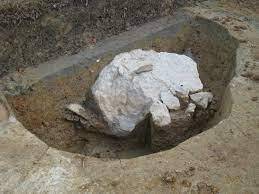

Sean bienvenidos japonistasarqueologicos, a una nueva entrega de arqueología nipona en esta ocasión nos vamos a la prefectura de Hyogo, que se localiza en la región de Kansai con su capital Kobe una vez dicho esto pónganse cómodos que empezamos. - Hyogo estaba atravesada por cuatro caminos: Sanin-do en al norte, Sanyo-do en el centro, Nankai-do en el sur y Mimasaka-do y Tajima-do, recordamos que do en japonés es camino. A lo largo de los caminos, tienden a colocarse las casas, ya que son vías de comunicación y comercio que iban a dos ciudades, entre otras, como son el caso de la Station House ciudad de Tatsuno y Noma Station House ciudad de Kamigori. - En la primera foto os enseño las excavaciones arqueológicas realizadas en las campañas de: 2007-2009(Ruinas de Furu-Ouchi la casa de la estación de Kako: Noguchi-cho, ciudad de Kakogawa). En la segunda foto os enseño las excavaciones arqueológicas realizadas en las campañas de: 2010-2012(Ruinas de Nagasaka-dera nombre provisional: Casa de la estación Omi: Uozumi-cho, ciudad de Akashi). En la tercera foto os enseño las excavaciones arqueológicas realizadas en las campañas de: 2013-2016(Ruinas de Mukoyama Estación de Ouchi <Oichi>: Taiichi Naka, ciudad de Himeji). En la cuarta y última foto os enseño las excavaciones arqueológicas realizadas en las campañas de:2017-2022(Ruinas de Tsujigauchi Takada Station House: Kamigori Town). - Espero que os guste y nos vemos en próximas publicaciones fotos fuente:hyogo_koukohaku les doy mis más sinceras felicitaciones por el gran trabajo que ejecutan para la historia de la humanidad. Welcome Japanese archaeologists, to a new installment of Japanese archaeology, this time we are going to Hyogo prefecture, which is located in the Kansai region with its capital Kobe, so make yourselves comfortable and let's get started. - Hyogo was crossed by four roads: Sanin-do in the north, Sanyo-do in the centre, Nankai-do in the south and Mimasaka-do and Tajima-do, remember that do is Japanese for road. Along the roads, houses tend to be placed, as they are communication and trade routes that went to two cities, among others, such as the Station House in Tatsuno city and Noma Station House in Kamigori city. - In the first photo I show you the archaeological excavations carried out in the campaigns of: 2007-2009 (Ruins of Furu-Ouchi the Kako Station House: Noguchi-cho, Kakogawa City). In the second photo I show you the archaeological excavations carried out in the campaigns of: 2010-2012(Ruins of Nagasaka-dera provisional name: Omi station house: Uozumi-cho, Akashi city). In the third photo I show you the archaeological excavations carried out in the campaigns of: 2013-2016(Ruins of Mukoyama Ouchi Station <Oichi>: Taiichi Naka, Himeji city). In the fourth and last photo I show you the archaeological excavations carried out in the campaigns of:2017-2022(Ruins of Tsujigauchi Takada Station House: Kamigori Town). - I hope you like it and see you in future publications photos source:hyogo_koukohaku I give you my sincere congratulations for the great work you execute for the history of mankind.
日本の考古学者の皆さん、ようこそ日本考古学の新連載へ。今回は関西地方に位置し、県庁所在地の神戸を擁する兵庫県です。 - 兵庫県には4つの道があった:北の山陰道、中央の山陽道、南の南海道、そして美作道と但馬道である。たつの市の駅舎や上郡市の野間駅舎のように、街道沿いには家が建ち並ぶ。 - 1枚目の写真は、2007年から2009年にかけて行われた発掘調査(加古川市野口町・古大内駅舎跡)。 写真2枚目は、2010年〜2012年の発掘調査(長坂寺跡(仮称)近江駅舎跡:明石市魚住町)。 3枚目は2013年〜2016年の発掘調査(姫路市太一中:向山大内駅跡)です。 最後の4枚目は、2017年から2022年にかけての発掘調査(辻垣内高田駅舎跡:上郡町)です。 - あなたがこの写真を気に入ってくださり、今後の出版物でお会いできることを願っています。 photo source:hyogo_koukohaku あなたが人類の歴史のために行っている偉大な仕事に対して、心から祝福を贈ります。





Sean bienvenidos, japonistasarqueológicos, a una nueva entrega arqueológica en esta ocasión hablaremos de un túmulo funerario con forma de ojo de cerradura una vez dicho esto pónganse cómodos que empezamos. - El túmulo se localiza en la ciudad de Yokohama, en la prefectura de Kanagawa, en la región de Kantō, isla de Honshū. Se realizaron excavaciones en las Ruinas de Oikawa Isemiya que acompañan la construcción de la carretera de circunvalación de la Ruta Nacional 246 Atsugi Hadano Road. El túmulo funerario tiene forma de ojo de cerradura, data de alrededor de los siglos III al VII d.c y fue descubierto en la cuenca del río Ogino. - El túmulo funerario, con forma de ojo de cerradura, tiene unas dimensiones de 37 metros de largo y 21 metros de ancho. En el sitio se encontraron una losa y herramientas de piedra del período Kofun. En los alrededores se han encontrado los restos de una vivienda del período Jomon. - Espero que os haya gustado y nos vemos en próximas publicaciones que pasen una buena semana. Welcome, Japanese archaeologists, to a new archaeological instalment, this time we are going to talk about a burial mound in the shape of a keyhole, so make yourselves comfortable and let's get started. - The burial mound is located in the city of Yokohama, Kanagawa Prefecture, in the Kantō region of Honshū Island. Excavations were conducted at the Oikawa Isemiya Ruins accompanying the construction of the Atsugi Hadano Road 246 National Route 246 bypass. The burial mound is keyhole-shaped, dates from around the 3rd to 7th centuries AD, and was discovered in the Ogino River basin. - The burial mound, shaped like a keyhole, is 37 metres long and 21 metres wide. A stone slab and stone tools from the Kofun period were found at the site. The remains of a Jomon period dwelling were found nearby. - I hope you liked it and I will see you in future publications. Have a nice week. 日本の考古学者の皆さん、ようこそ考古学の新連載へ!今回は鍵穴の形をした古墳についてお話しします。 - 古墳は神奈川県横浜市、本州の関東地方にある。国道246号厚木秦野道路バイパスの建設に伴い、及川伊勢宮遺跡で発掘調査が行われた。荻野川流域で発見されたこの古墳は、紀元後3世紀から7世紀ごろのもので、鍵穴のような形をしている。 - 鍵穴のような形をした古墳は、長さ37メートル、幅21メートル。古墳時代の石板や石器が出土している。近くに縄文時代の住居跡が見つかった。 - お気に召していただけたなら幸いである。 それでは、よい一週間を。 -



Sean bienvenidos japonsistasarqueológicos, a una nueva publicación en esta ocasión nos trasladamos a prefectura de Akita una vez más para hablar de la tumba de Ono no Komachi una vez dicho esto comenzamos. - Fue famosa como poeta, si no también tenía una belleza incomparable: ¡Fui a cubrir la tumba de Ono no Komachi en la ciudad de Osaki! ! La ciudad de Osaki, fue donde se refugió tras, ser expulsada del mismo, tuvo que regresar a Akita su ciudad natal. Después de eso, realizó una visita de 100 días para orar por la recuperación de su enfermedad, pero falleció el día en que se cumplió su deseo. Se dice que cuando los aldeanos la vieron, se apiadaron de ella y erigieron una lápida por su triste muerte. - ¿Quién fue Ono no Komachi? Fue una poetisa del periodo Heian, se desconocen cuando nació y murió, pero se la conoce como "Rokukasen", se baraja la posibilidad de que viviera en Kioto, además de la prefectura de Akita, como la prefectura de Kioto y la prefectura de Kumamoto, sobre dónde se dice que nació. - Espero que os haya gustado y nos vemos en próximas publicaciones, ¿Conocían esta historia y a la poetisa?. 今回も秋田県に場所を移し、小野小町の墓についてお話しします。 - 歌人として有名な小野小町だが、その美しさは比類ない。大崎市にある小野小町の墓を取材した!!大崎市から追放された彼女が避難した大崎市は、故郷の秋田に帰ることになった。その後、病気の回復を祈願して百日詣りをしたが、その願いが叶った日に亡くなった。その姿を見た村人たちが憐れみ、悲しい死を悼んで墓石を建てたという。 - 小野小町とは?平安時代の歌人で、いつ生まれ、いつ亡くなったかは不明だが、「六歌仙」の名で知られ、京都のほか、秋田県、京都府、熊本県などに住んでいたと考えられている。 - この物語と歌人をご存知でしたか? Welcome to a new publication, this time we move to Akita prefecture once again to talk about the tomb of Ono no Komachi, so let's begin. - She was famous as a poet, but she also had an incomparable beauty: I went to cover the tomb of Ono no Komachi in the city of Osaki! ! Osaki City, where she took refuge after being expelled from Osaki, had to return to Akita, her hometown. After that, she made a 100-day visit to pray for recovery from her illness, but died on the day her wish came true. It is said that when the villagers saw her, they took pity on her and erected a tombstone for her sad death. - Who was Ono no Komachi? She was a poetess of the Heian period, it is unknown when she was born and when she died, but she is known as "Rokukasen", and it is thought that she lived in Kyoto, as well as Akita Prefecture, Kyoto Prefecture and Kumamoto Prefecture, where she is said to have been born. - I hope you liked it and see you in future posts. Did you know this story and the poetess?